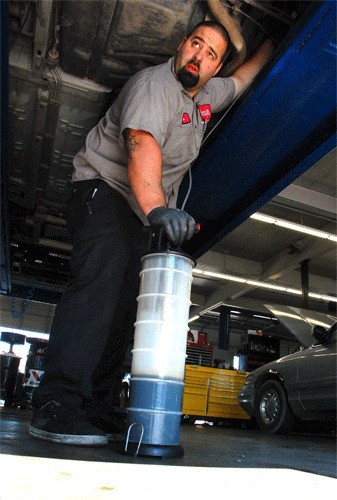Sales tax in Oak Harbor last year declined nearly twice that of any other municipality in Island County, according to the state Department of Revenue.
Considered the economic barometer for Washington and its cities, the state agency records and regularly releases sales tax statistics. A May report showed that total taxable retail sales in Oak Harbor declined $29.98 million, or 8.92 percent, from $336.09 million collected in 2009 to $306.16 in 2010.
That compares to a 4.71 percent decline in rural Island County and a 1.83 percent decline in Langley. Coupeville saw the only increase of 6.62 percent.
But despite the decline in Oak Harbor, city officials and business leaders aren’t too alarmed, as some of those industries hit the hardest are actually much better off than they appear on first glance.
For example, the construction industry saw an overall decline of $23.04 million, or about 42 percent, from $57.24 million in 2009 to $33.19 million last year. However, a large portion of that is due to the millions spent in 2009 on the Oak Harbor High School renovation project.
“We were able to tie that to the two main contractors for the school,” said Doug Merriman, director of the city’s Finance Department.
Expensive projects can wreak havoc on yearly statistics, indicating alarming shifts that don’t really exist. In fact, construction in 2009 was the highest it’s been in five years: $37.73 million in 2008, $48.74 million in 2007, and $36.58 million in 2006.
One industry that has seen a definite decline, however, is the car business. Overall, new and used car sales fell 29.9 percent, from $15.51 million in 2009 to $10.87 million last year.
The vast majority can be attributed to the demise of the city’s new car dealerships; three out of four have closed since 2008. Sales declined from $17.18 million in 2006 to just $9.09 million in 2010.
Used car sales have also been affected. In 2006, sales brought in $12.19 million but fell dramatically in 2008 to just $2.19 million. Although that is largely due to the loss of two new car dealerships that year — they sold used cars as well — receipts for strictly used car dealers slid from $1.82 million in 2009 to $1.78 million this past year.
“There is no impulse buying; it’s need only,” said Steve Saltness, of the Car Depot on Highway 20.
A general reluctance by banks to approve car loans has compounded the problem. The result, however, has been a boon to the automotive repair industry. Overall, automotive parts, repair, and tire sales increased 6.7 percent, from $8.03 million in 2009 to $8.57 million in 2010.
“We’ve had a few slow days but for the most part we’ve been really busy,” said Mark Johnson, a co-manager of Pioneer Automotive Service on Pioneer Way.
But while there are viable explanations for the overall health of big-ticket industries, such as construction and the car business, other business trends that popped up in 2010 are not so clear and have left business leaders wondering.
The most curious is a rise in the sale of non-essential items. Apparel and accessories increased 10.4 percent, from $4.04 million in 2009 to $4.46 million in 2010. That includes $1.59 million in jewelry sales.
“That blows a hole in my ‘extras are out, essentials are in’ theory,” said Jill Johnson, director for the Oak Harbor Chamber of Commerce.
Even more surprising is the sale of sporting goods, toys, and goods at hobby/craft stores. They exploded with a whopping 40.5 percent increase. In all, sales jumped from $1.58 million in 2009 to $2.22 million last year.
Johnson said the shifts could mean several things. The health of the jewelry industry may be that people are finding value in gold — prices are at an all-time high — and precious stones. And the support of sporting goods may actually indicate frugality; people nixing more expensive vacations out of town for fun at home.
“Everybody wants to still enjoy life, you just have to find a way to do it affordably,” Johnson said.
According to Merriman, the city closely tracks overall sales tax statistics. The year’s first quarter numbers were recently compiled and revealed no big surprises. Sales tax is largely “holding flat” though revenue to the city is down just over 1 percent, about $25,000, from last year’s projections.
That’s not enough to require a budget adjustment — the benchmark is about $50,000 — but that could change before the end of the year. The state Economic and Revenue Forecast Council is projecting “retail weakness” in the third quarter, he said.
While the city could opt to play a wait-and-see game by reviewing figures at the end of the year and then making an adjustment, Merriman said monitoring sales tax on a monthly basis is just plain better business.
“The thing about sales tax is staying vigilant,” he said.




